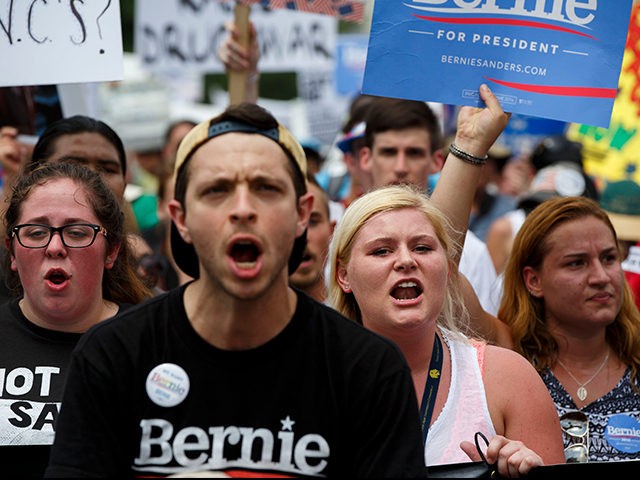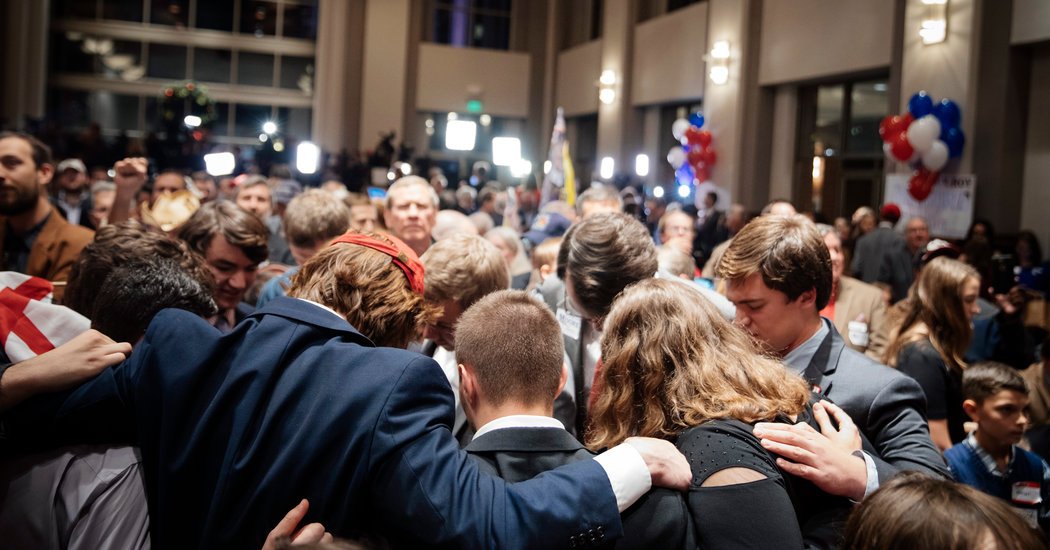
The downturn in religious affiliation in the U.S. has been interpreted as a sign of secularization and how America may be becoming more like European countries, but a recent article argues that it may be more the case that one segment of Americans is becoming more intensely religious than the rest of the population. Sociologists Landon Schnabel and Sean Bock analyze the General Social Survey, looking specifically at which segments of the population have shown change or decline in religious belonging, belief and practice. Writing in the journal Sociological Science (November), the researchers find that it is the moderate religious population that has declined most drastically while those most intense in their devotion have remained stable. On such measures as church attendance, frequency of prayer, belief in a literal Bible, and religious identity, those Americans who are most intense have even shown signs of increase. For instance, in 1989, 31 percent of those saying they prayed once a day reported praying several times daily, while that number increased to 40 percent in 2016.
Meanwhile, moderate religious practice and belief, such as monthly attendance, has seen the sharpest drop. Schnabel and Bock criticize those scholars claiming that America is no longer religiously exceptional by noting that the stable segment of intense religionists in the U.S. remains an exception in the West. What is called American-style secularization is really a case of moderates dropping out, feeling that religion has become “too intense, too strict, and too politicized in the face of social change.” The researchers conclude that the “persistent intensity of American religion in conjunction with the decline of moderate religion may produce a widening cultural gulf between rising secularists and persistently intense religionists.”
(Sociological Science, https://www/sociologicalscience.com)

Internet use may be associated with religious non-affiliation and the relativistic acceptance of the equal validity of all religions but does not displace religious attendance or other kinds of involvement in time-related religious activities, according to a study by Paul McClure of Baylor University in the Journal for the Scientific Study of Religion (online in December). Using data from the Baylor Religion Survey (Wave III), McClure found that an increase in the amount of time spent on the Internet is linked with decreased odds that an individual will be religiously affiliated. But while the researcher found that television viewing does have an association with involvement in fewer religious activities, the same cannot be said for Internet use. He argues that a reason why the Internet may affect beliefs, such as religious inclusivism, and affiliation is that the medium creates a “new space through which individuals must navigate competing truth claims and ideas about what is ultimately important…the Internet encourages tinkering with an assortment of spiritual options, and rejecting the exclusive truth claims of any one particular religious tradition becomes more likely.” But the finding that Internet use did not cut into time-related religious activities may mean that Internet use fills gaps “between previously scheduled events” but does not displace them.
(Journal for the Scientific Study of Religion, http://onlinelibrary.wiley.com/journal/10.1111/(ISSN)1468-5906)

Although congregations are increasingly interested in healing and health and are becoming more involved in such ministries, various ethnic groups approach this issue differently, according to an article by researchers Daniel Bolger, Cleve Tinsley IV, and Elaine Howard Ecklund. Writing in the Review of Religious Research (Online in November), the researchers interviewed 47 clergy and laity at 18 different Korean, Latino, and African-American congregations and found that while they appreciated the prevalence of health initiatives in their churches, they viewed the interface between religion and medicine differently. The African-American and Latino pastors and laity tended to see faith as providing the potential for healing. Emphasis on divine intervention was especially prominent among African-American respondents. The black respondents were the only group to articulate distrust toward the medical establishment. The Korean Americans, the one ethnic group of the three most represented in the medical professions, “tended to frame the main benefit of faith as the support of the faith community rather than the efficacy of prayer in promoting health outcomes.” Although Korean Americans cited the potential for divine healing, they saw the comfort and actual medical care given by other Christians and professionals in the community as the most direct advantage of faith.
(Review of Religious Research, https://link.springer.com/journal/13644)

Active secularists occupy the far left and activist wing of the Democratic Party that is most likely to be proactive in moving the party leftward, according to a recent study. Writing in the journal Politics and Religion (online November), Mark Brockway surveyed members of the American Humanist Association and found that these so-called “committed seculars” see themselves as more to the left of the Democratic Party than do the non-affiliated. Brockway found that these humanists are also more likely to get involved in campaigns to steer the Democratic Party further leftward. Comparing the committed seculars to religious progressives, Brockway found that there may be some affinity between these groups. “The merging of religious and secular Democrats is especially likely given that an important cultural issue, same-sex marriage, has been settled by the Supreme Court, and will likely lose salience as an issue for religious Democrats. This may allow the Democratic Party to aggressively tap secular members to be donors and volunteers for Party candidates and campaigns,” Brockway concludes.
(Politics and Religion, https://www.cambridge.org/core/journals/politics-and-religion)

Fewer than half of those who identify as evangelicals (45 percent) strongly agree with core evangelical beliefs, according to a survey by LifeWay Research (released Dec. 5). A significant number of evangelical believers reject the term “evangelical,” with only two-thirds (69 percent) self-identifying as such. Some research studies define “evangelical” by self-identification, with respondents picking from a list of religious traditions. Others categorize people as evangelical by the churches with which they identify. LifeWay used a set of four questions about the Bible, Jesus, salvation and evangelism developed in partnership with the National Association of Evangelicals. Those who strongly agree with all four are considered to be evangelicals by belief. Fifteen percent of Americans are evangelicals by this criterion. In contrast, 24 percent of Americans self-identify as evangelicals. Researchers found differences between the two groups, the main one being that evangelicals by belief are more diverse than self-identified evangelicals. Evangelicals by belief go to church more often. Seventy-three percent say they attend services once a week or more. That drops to 61 percent for self-identified evangelicals.
(LifeWay Research, http://lifewayresearch.com/)
